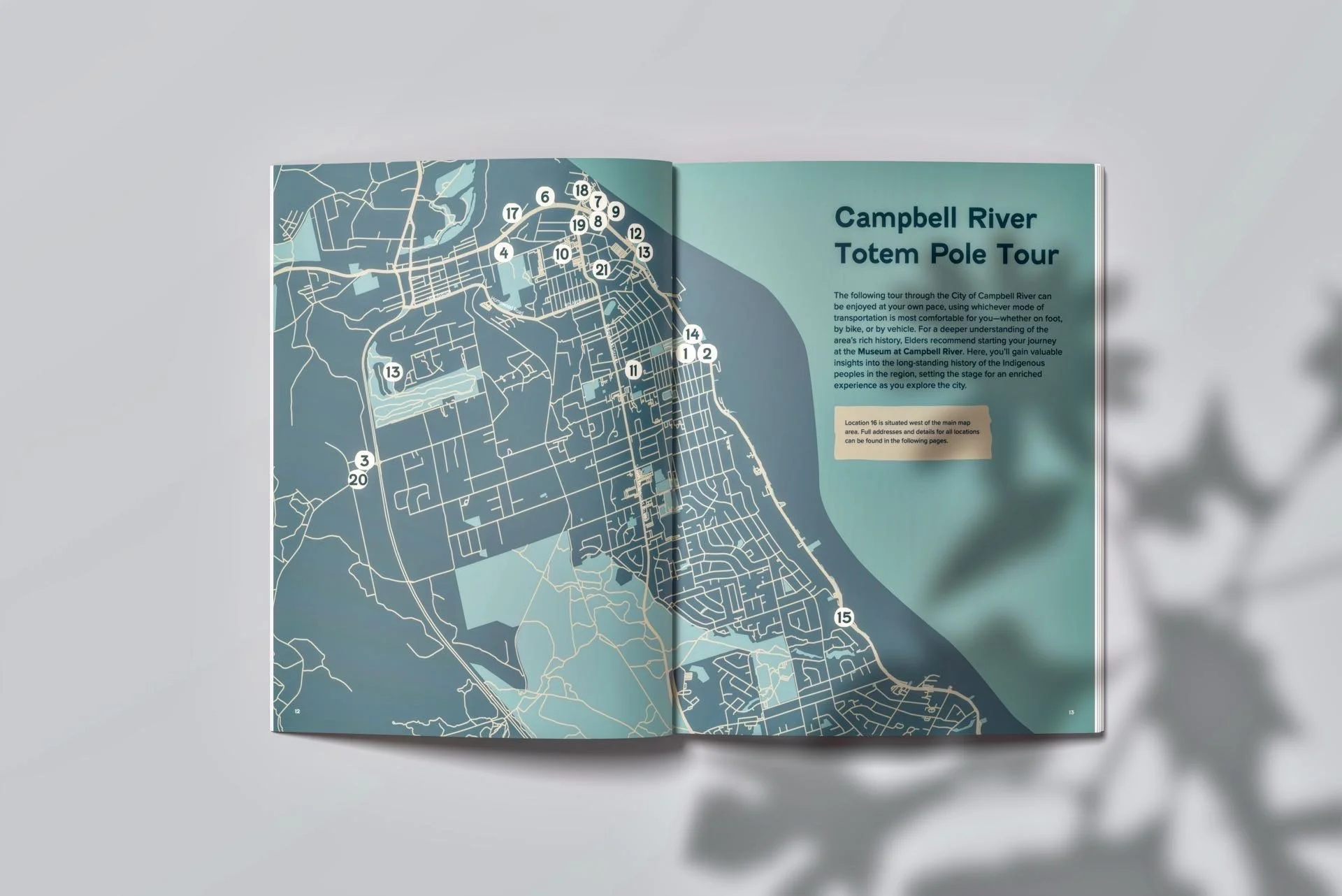Indigenous Tourism Guide: Campbell River and the Liǧʷiłdax̌ʷ Nations
Client: City of Campbell River - Economic Development and Indigenous Relations
Location: Campbell River, BC
Industry: Tourism
Services Provided: Creation and coordination of the complete guide
Introduction
The City of Campbell River, in partnership with the Liǧʷiłdax̌ʷ Nations — We Wai Kai, We Wai Kum, and Kwiakah — envisioned a tourism guide unlike any other: one that would invite visitors to experience the region through the rich stories, culture, and traditions of the Indigenous peoples who have stewarded these lands for generations.
To bring this vision to life, a unified strategy was needed — one that seamlessly integrated content development, photography, and design — to create a guide that honored the past, celebrated the present, and built deeper connections with visitors and the community.
Project Overview
Objective:
Create a first-of-its-kind tourism guide rooted in Indigenous storytelling, culture, and place.
Deliver an authentic and engaging visitor experience that highlights Indigenous-owned businesses, landmarks, and practices.
Build a cohesive narrative through integrated content, visual design, and photography.
Strengthen cultural understanding and connection between visitors and the local community.
Our Approach
A story-first strategy was used to develop the written content, placing Indigenous voices, traditions, and histories at the center. Rather than simply listing attractions, the guide was designed to offer narratives that invite visitors to see the land through the perspectives of those who have lived in relationship with it for thousands of years.
Key actions included:
Collaborative storytelling integration through the Liǧʷiłdax̌ʷ Nations and local businesses.
Detailed profiles of Indigenous-owned businesses, cultural experiences, and iconic sites.
Thematic organization to create a journey-like flow through past and present.
Photography and Visual Strategy
Authentic imagery played a critical role in bringing the guide to life. Photography focused on real moments, community, and landscapes — capturing not just the sights of Campbell River, but the spirit of place.
Photography highlights:
Environmental photography capturing both iconic landmarks and lesser-known sacred spaces.
Visual storytelling to complement and deepen the written narratives.
Design and Integration
The design process unified content and imagery into a cohesive, engaging experience for readers. The aesthetic approach honored Indigenous artistic traditions while ensuring the guide remained accessible and inviting for a broad audience.
Design priorities:
Clean, respectful layouts allowing stories and photos to lead.
Visual elements inspired by Indigenous motifs, carefully balanced for authenticity and clarity.
User-friendly structure, making it easy for visitors to follow the journey through the guide.
Results
First-of-its-Kind Publication: Successfully created a tourism guide that centers Indigenous voices and perspectives — a pioneering collaboration for Campbell River.
Enhanced Visitor Experience: Delivered a resource that encourages deeper cultural connection and understanding among visitors.
Community Representation: Featured Indigenous-owned businesses and cultural landmarks prominently, creating new opportunities for economic and cultural growth.
Foundation for Future Projects: Set a precedent for future collaborations between municipalities and Indigenous communities, with storytelling and authenticity at the forefront.
Conclusion
Through the seamless integration of content, photography, and design, the City of Campbell River and the Liǧʷiłdax̌ʷ Nations brought to life a tourism guide that does more than highlight a destination — it invites visitors into a living story, rooted deeply in culture, tradition, and community.
This project demonstrates the power of strategic collaboration in building a tourism experience that is not only visually compelling, but culturally meaningful — creating a lasting impact for visitors and the community alike.




